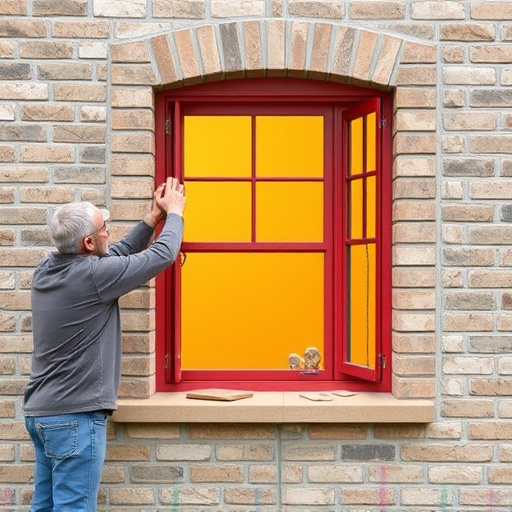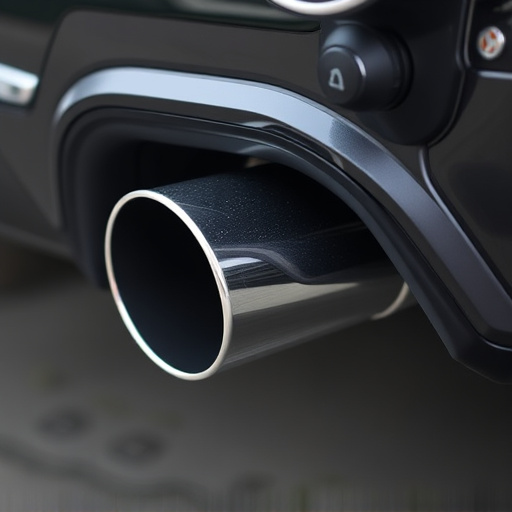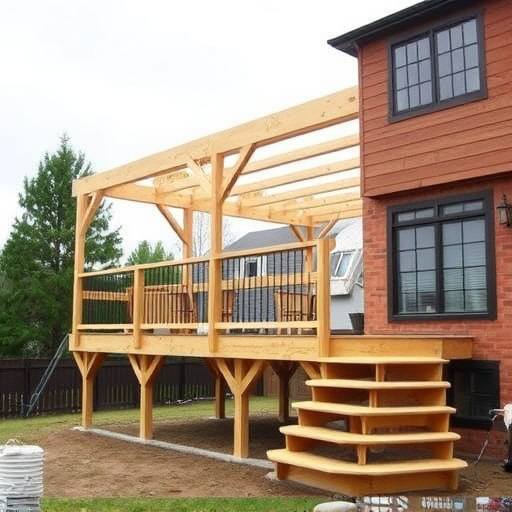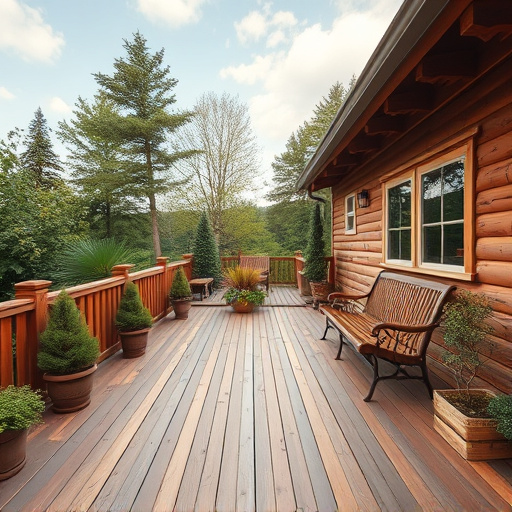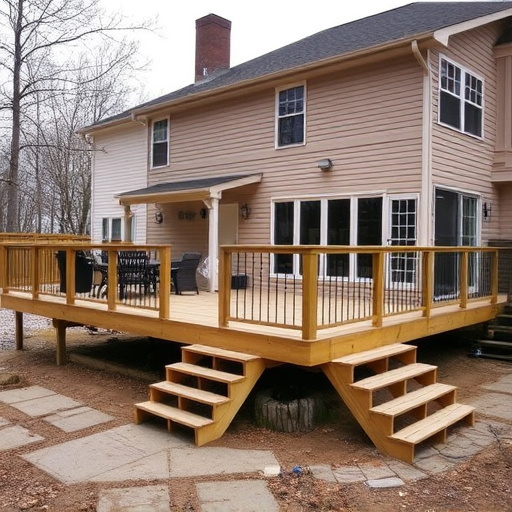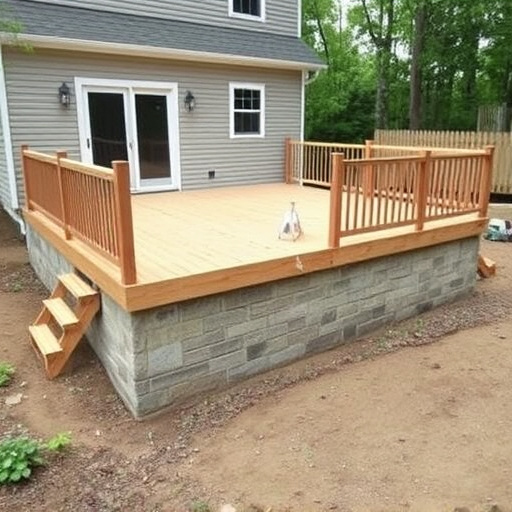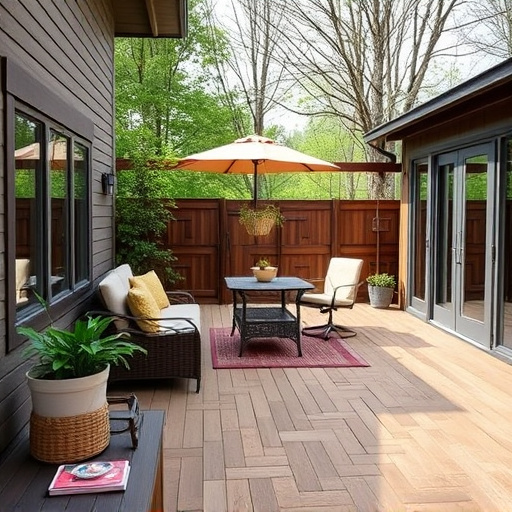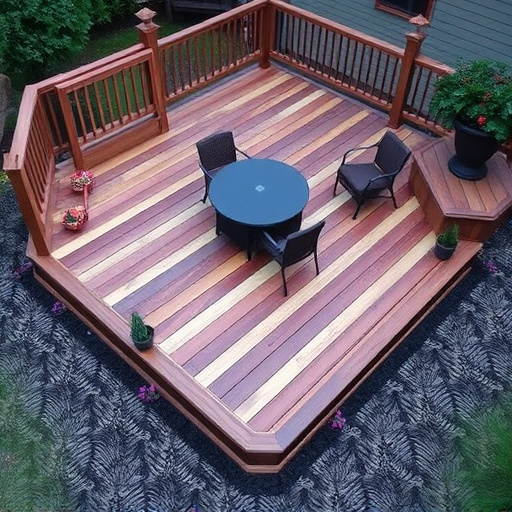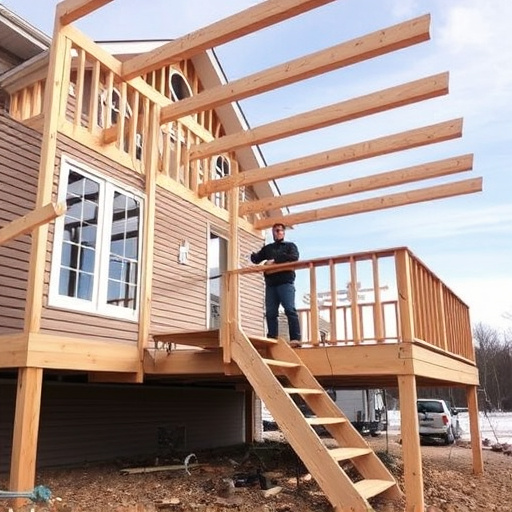Eco-friendly decking materials like certified composite wood, bamboo, steel, and aluminum are gaining popularity for multi-level decks due to their durability, low maintenance, and reduced environmental impact. These sustainable options not only enhance the longevity and aesthetic appeal of the deck but also contribute to healthier living spaces and global sustainability efforts. Materials such as recycled plastic, bamboo, and reclaimed wood offer durability, versatility, and natural aesthetics, respectively, making them ideal for both residential and commercial applications. When combined with professional siding or roofing solutions, these eco-conscious materials can create a cohesive, sustainable design for multi-level deck structures.
Looking to build or renovate a multi-level deck while minimizing your environmental impact? Eco-friendly materials offer an exciting array of sustainable options, from bamboo and recycled plastic to wood alternatives that protect forests. This guide explores how to choose, design, install, maintain, and enjoy a beautiful, long-lasting multi-level deck that harmonizes with nature. Discover the benefits, creative possibilities, and practical tips for embracing sustainability in your outdoor living space.
- Choosing Eco-Friendly Decking Materials
- – Benefits of using sustainable materials for multi-level decks
- – Common eco-friendly options and their properties
Choosing Eco-Friendly Decking Materials
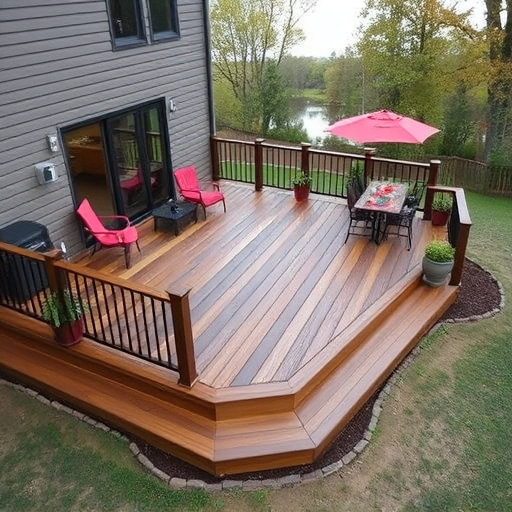
When designing a multi-level deck, prioritizing sustainability has never been easier thanks to the growing availability of eco-friendly decking materials. These options not only reduce environmental impact but also contribute to healthier living spaces. Look for materials certified by reputable organizations that focus on sustainable practices, ensuring they meet specific ecological criteria.
One popular choice is recycled composite wood, which is a blend of plastic and wood fibers, offering durability and low maintenance. Another option is natural bamboo, known for its rapid growth and strength, making it an excellent alternative to traditional decking in both residential and commercial roofing applications. Additionally, consider steel or aluminum decks, often used in home service solutions, as they are highly durable, require minimal maintenance, and can be recycled at the end of their useful life, aligning with sustainable practices in both residential and commercial settings.
– Benefits of using sustainable materials for multi-level decks
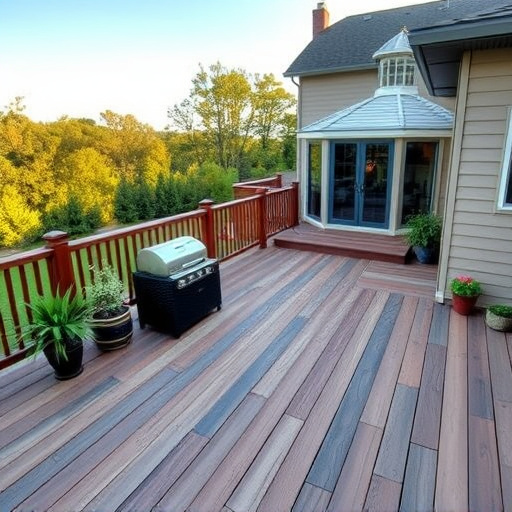
Incorporating eco-friendly materials into multi-level deck construction offers a wide array of advantages for both the environment and homeowners. One of the primary benefits is reduced environmental impact, as sustainable materials often have lower carbon footprints compared to traditional options. This choice contributes to minimizing the ecological footprint of your home exterior, aligning with global efforts towards sustainability.
Moreover, these materials can enhance the longevity and durability of your multi-level deck, providing superior performance over time. Many eco-friendly options are designed to withstand harsh weather conditions, resist rot, and maintain their aesthetic appeal for extended periods. By opting for sustainable materials, homeowners not only invest in a visually appealing and durable deck but also contribute to responsible home service solutions and siding services that promote a greener lifestyle without compromising quality or aesthetics.
– Common eco-friendly options and their properties
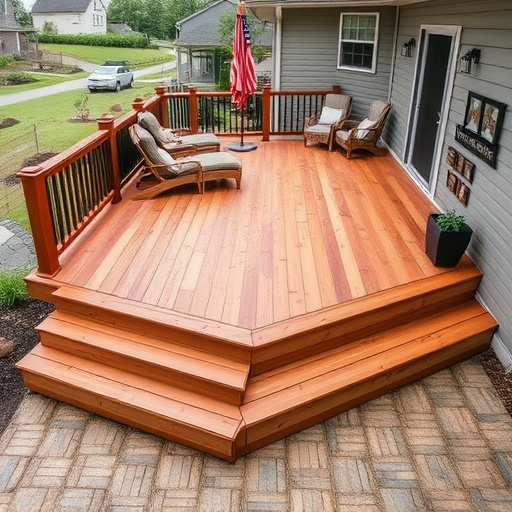
In the realm of sustainable construction, eco-friendly materials for multi-level decks are gaining traction. Options like recycled plastic, bamboo, and reclaimed wood offer both aesthetic appeal and environmental benefits. Recycled plastic, a versatile choice, is durable and can be molded into various shapes, making it ideal for decking boards and handrails. Its resistance to rot and insects ensures longevity, reducing the need for frequent replacements.
For a more natural look, bamboo and reclaimed wood are popular selections. Bamboo, known for its rapid growth, is highly sustainable and provides a unique aesthetic. Reclaimed wood, sourced from recycled structures, adds character and charm while minimizing waste. Both materials are excellent choices for decking and can be combined with professional siding or commercial roofing solutions to create a cohesive, eco-conscious design, even when considering roof replacement for the multi-level deck structure.
When designing a multi-level deck, opting for eco-friendly materials is not only beneficial for the environment but also ensures longevity and aesthetic appeal. By choosing sustainable options, you contribute to reducing waste and preserving natural resources. With the right selection, your outdoor living space can be both eco-conscious and stylish, setting a positive example for eco-friendly practices in home construction.
